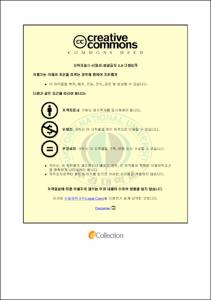구연(口演) 중심의 구비문학 교수학습 연구
- Alternative Title
- A Study on Teaching and Learning Oral Literature : Focused on the Oral Performance
- Abstract
- Oral literature is a form of literature handed down from mouth to mouth. Handed down in the domain of the spoken word, oral literature is distinguished from written literature.
There are issues in government-authorized Korean textbooks according to the revised Korean curriculum in 2007 teaching oral literature like written literature. While it puts emphasis on the comprehension and appreciation of literary works, it pays little attention to the acception and production activities utilizing oral performances. This makes it difficult to capture the essence of oral literature.
The essence of oral literature comes from the site of oral performances. Oral literature comprises three factors: the speaker producing literature, the audience accepting literature and the circumstance ruling the other two. As the three factors always affect the oral literature, there is no work identical. Therefore, teaching and learning text-only oral literature is meaningless.
To solve these issues, this study suggests a teaching and learning method to capture the essence of oral literature. First, the objective of oral literature is planned in accordance with that of Korean education. Second, the teaching and learning method consists of three steps.
Oral literature in the oral performance is cognitive, oral literature in its acception and production is functional, and oral literature as an overall life experience is affective.
Teaching and Learning steps are divided into 'pre-learning', 'learning on site', and 'post-learning'.
'Pre-learning' is for checking the learner's background knowledge to decide the possibility for 'learning on site'. And make preparation for field learning.
'Learning on site' is for learning how to accept and produce oral literature on the site of oral performance. Learners understand the site of oral performance with their background knowledge and try to achieve the learning objective.
'Post-learning' is for learners to discuss the oral literature based on what they learn on the site and for teachers to evaluate learners. Learners participate in oral performance as speakers and audience.
This study expects three educational effects as follows: First, it allows teachers and learners to get access to the essence of oral literature in education. Second, it helps then to develop overall Korean language competence. Third, it leads learners to creative thinking.
- Issued Date
- 2012
- Awarded Date
- 2012. 8
- Type
- Dissertation
- Publisher
- 부경대학교
- Alternative Author(s)
- Hwang, Young Tae
- Affiliation
- 부경대학교 교육대학원
- Department
- 교육대학원 국어교육전공
- Advisor
- 곽진석
- Table Of Contents
- 목 차
Ⅰ. 서론 ················································································· 1
1. 연구의 목적과 필요성 ·················································· 1
2. 연구사 검토 ··································································· 6
3. 연구 방법 및 범위 ······················································· 13
Ⅱ. 구비문학의 본질 ·························································· 16
1. 구연(口演)으로서의 구비문학 ·································· 16
2. 수용과 생산으로서의 구비문학 ································ 24
3. 삶의 총체적 체험으로서의 구비문학 ······················· 28
Ⅲ. 구비문학 교육 실태 ····················································· 35
1. 국어과 교육과정 체제 ················································· 35
가. 성격 ··········································································· 35
나. 목표 ··········································································· 37
다. 내용 체계 ·································································· 38
라. 학년별 내용 ······························································ 40
마. 국어과 교육과정 체제 분석 ···································· 44
2. 국어 교과서의 구비문학 교육 ····································· 47
가. 분석 기준 설정 ·························································· 47
나. 디딤돌 교과서 ··························································· 50
다. 천재교육 교과서 ······················································· 54
라. 교학사 교과서 ··························································· 57
3. 구비문학 교육 실태 종합 분석 ···································· 60
Ⅳ. 구연(口演) 중심의 구비문학 교육 방안 ····················· 65
1. 구연(口演) 중심의 구비문학 교육 설계 ····················· 65
가. 학습 목표와 내용 선정 ············································· 67
나. 교수⋅학습 활동 및 방법 ·········································· 69
다. 학습 자료 및 매체 활용 ············································ 74
라. 학습자 평가 ································································ 75
2. 구연(口演) 중심의 구비문학 교육 설계 ······················ 77
가. 사전 학습 ····································································· 77
나. 현장 학습 ····································································· 85
다. 사후 학습 ······································································ 91
Ⅴ. 결론 ·················································································· 100
·········································································· 105
- Degree
- Master
- Files in This Item:
-
-
Download
 구연(口演) 중심의 구비문학 교수학습 연구.pdf
기타 데이터 / 4.98 MB / Adobe PDF
구연(口演) 중심의 구비문학 교수학습 연구.pdf
기타 데이터 / 4.98 MB / Adobe PDF
-
Items in Repository are protected by copyright, with all rights reserved, unless otherwise indicated.